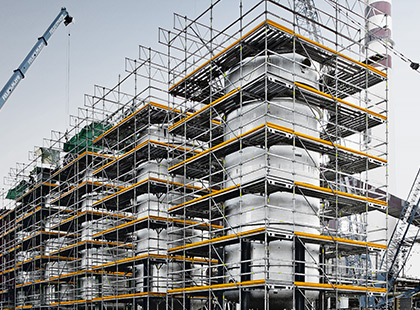
Proper assembly and dismantling of scaffolding are critical to ensuring safety and efficiency on construction sites. Scaffolding provides essential access to elevated areas, but if not assembled and disassembled correctly, it can pose significant risks. This guide provides step-by-step instructions for the safe and effective assembly and dismantling 鋁架租借 of scaffolding, ensuring that every stage of the process is handled with precision and care.
- Planning and Preparation
Before beginning the assembly or dismantling of scaffolding, thorough planning and preparation are essential. Start by reviewing the scaffold design and safety requirements specific to your project. Ensure you have all necessary components, including frames, planks, braces, and safety guardrails. Conduct a site inspection to assess the ground conditions and ensure stability. Proper planning also involves setting up a clear workspace and coordinating with team members to ensure everyone understands their roles and responsibilities during the process.
- Assembling the base and Erecting the Frames
The assembly process begins with setting up the base of the scaffold. Ensure that the ground is level and stable before placing base plates or adjustable feet to provide a solid foundation. Next, start assembling the vertical frames by connecting them with horizontal rails or ledgers. Secure the frames in place and ensure they are plumb and level using a spirit level. Once the vertical frames are properly aligned, add diagonal braces to provide stability and prevent swaying. Regularly check the alignment and adjust as needed to maintain a stable structure.
- Installing Platform Planks and Guardrails
After the framework is in place, proceed to install the platform planks or decking. Ensure that the planks are securely placed and that there are no gaps between them, as these gaps can create tripping hazards. For added safety, install guardrails and toe boards around the edges of the scaffold platform to prevent falls and keep tools and materials from falling off. Ensure that all guardrails and toe boards are firmly attached and comply with safety standards. Proper installation of these components is crucial for the overall safety of the scaffold.
- Inspecting the Scaffold
Once the scaffold is assembled, conduct a thorough inspection to ensure it meets all safety requirements and regulations. Check that all connections are secure, and that the scaffold is stable and level. Verify that the platform planks are properly supported and that guardrails and toe boards are correctly installed. Look for any signs of damage or wear on the scaffold components, and address any issues before allowing workers to use the scaffold. Regular inspections are essential throughout the use of the scaffold to maintain safety and functionality.
- Dismantling Preparation
When it’s time to dismantle the scaffold, begin by removing any tools, materials, and debris from the platform. Ensure that the scaffold is no longer in use and that all workers have safely exited the scaffold. Follow a systematic approach to dismantling, starting from the top of the scaffold and working your way down. This approach helps to maintain stability and prevents accidental collapses during the dismantling process. Ensure that all team members are equipped with proper safety gear and understand the dismantling procedure.
- Dismantling the Scaffold
Start dismantling the scaffold by removing the platform planks and guardrails. Carefully lower the planks and guardrails to avoid causing damage or injury. Once these components are removed, disassemble the vertical frames and horizontal rails in reverse order of assembly. Use appropriate tools to detach components and avoid using excessive force, which can cause damage. As you disassemble, stack the components neatly and organize them for transport or storage. Properly managing the dismantling process helps ensure that all parts are preserved for future use.
- Post-Dismantling Inspection and Storage
After the scaffold has been completely dismantled, perform a final inspection of the site to ensure that all components have been collected and that no hazards remain. Store the scaffold components in a dry, clean, and secure location to prevent damage and maintain their condition. Regularly inspect stored components for signs of wear or damage and perform maintenance as needed. Proper storage and maintenance of scaffolding components extend their lifespan and ensure they are ready for the next project.
In conclusion, the proper assembly and dismantling of scaffolding are critical to maintaining safety and efficiency on construction sites. By following these step-by-step instructions, from planning and preparation to inspection and storage, you can ensure that scaffolding is assembled and dismantled correctly. Adhering to safety standards and best practices during these processes helps prevent accidents and ensures a secure working environment for all team members.
0 Comments